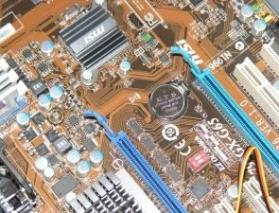 1. Giving Thanks among Humans
1. Giving Thanks among Humans
People often give each other gifts. If somebody gives you a gift, then they usually intend for you to have the gift. Their action is purposive. It is directed to a goal, which is your possession of the gift. Thus gifting contrasts with unintended transfers. You aren’t gifting your car to the thief who steals it. You don’t gift things by throwing them away or by losing them. If you win the lottery, your winnings were not gifted to you. So the first type of gifter is some human person who intends for you to get some valuable thing. Somebody might say that gifts need to be given for free (that is, without expectation of reciprocity). However, people can and do exchange gifts. If somebody gives you a gift, then you ought to be grateful. You ought to express your gratitude by giving thanks in return. So, if some person gives you a gift, then you should thank them.
A gifter can be a group mind or hivemind composed of many human people. A typical example of a hivemind is an institution (like a corporation, a charity, or a religious or political institution). If you buy some product, you can thank the company which manufactured it. If you buy some product, you can praise it for its excellent design, or blame it for its poor design. Here you are indirectly praising or blame the anonymous engineers who designed it. And, if you can praise or blame them, then you can thank them. You can be grateful for the excellent design of some well-designed product. You can express this gratitude by recommending the product to others, by thanking the company for its commitment to this virtue. You can write a thank-you note to the company, or post a positive review on social media. The company is a social institution – a corporate hive mind. Its existence is an abstract collectivity. If you give thanks to some corporation, you are giving thanks to a hivemind. You can give thanks to a corporate hivemind without thanking any of its particular members.
Gifters can be anonymous. A benefactor can anonymously donate money to some organization, and the organization can thank them: “We thank our anonymous donors, whoever you are, for your gifts.” And if you thank some company for some product, you probably don’t know the names of the engineers who designed it or the workers who made it. So you don’t need to know who you’re thanking in order to thank them. And gifters need not be able to receive acts of thanks-giving. Many cities have monuments giving thanks to soldiers who died in wars. Those deceased soldiers cannot receive these acts of thanks-giving. Here thanks-giving is not done by saying “Thank you.” It is done by another symbolic action, namely, raising a monument. Something is given to the soldiers, namely, public recognition for their sacrifice. And if their names are known, recording their names in a monument keeps their names alive. But these monuments are not raised for the sake of the dead; they are raised for the sake of the living. They are raised to remind the living that those who died did excellent things.
These considerations suggest a definition of thanks-giving. An act of thanks-giving is a sacrifice– it involves the wasteful squandering of resources. An act of thanks-giving is reciprocal– it reciprocates a sacrifice originally made by the gifter. It symbolic in the sense that it produces a symbol with little or no direct use-value for the recipient. Saying “Thank you” or sending a card is not an economic exchange – it gives the gifter a symbol of little or no economic value. Raising a monument to the dead does not give them anything of value. And an act of thanks-giving is done for the sake of the original gifter, meaning that giver of thanks has the gifter in mind when reciprocating.
2. Giving Thanks with Non-Humans
Gifters can be non-human persons. There are three possible cases in which gifters are non-human persons. Here persons are things that rational social agents. They can act with moral intentions and they can use linguistic symbols. The first case is non-human aliens. They can intentionally give humans gifts. If some alien gives you a gift, then you ought to thank it. And if you give it a gift, then it ought to thank you. The second case is artificial intelligence. We may invent robots that can intentionally give gifts to humans. If some intelligent robot gives you a gift, you ought to be grateful. You should give thanks to those robots. Conversely, if you give a gift to an intelligent robot, then it ought to express its thanks to you in return. The third case is non-human animals who may be persons. Perhaps other great apes are persons (for instance, chimpanzees, gorillas, orangutans). They can use sign-language to say “thank you” to humans who give them gifts. Parrots can also use human languages to give thanks. Parrots can understand human languages: hence we can give thanks to them.
Gifters can be animals which are not persons. Domesticated cats and dogs give gifts to humans. Likewise humans give food, water, shelter, and other care to dogs and cats. Nevertheless, dogs and cats are not persons. They are certainly intelligent enough to behave with some degree of goal-directed purposiveness: your cat gave you that dead bird because it wants you to have it. If some non-human animal gives you a gift, you ought to thank it. Perhaps dogs and cats understand enough human language to appreciate words like “thank you.” And they do exchange meaningful signals with humans. So it isn’t absurd to talk to domesticated animals. It isn’t a category mistake, like talking to a brick. But humans have other symbolic relations with animals. Petting is a purely symbolic action. It has no direct use-value to the animal getting petted. It is not like food or water or shelter. Petting merely expresses reciprocity.
Humans have raised monuments to their companion animals. The US Military Working Dog Teams National Monument was raised to thank military dogs for their service. Those dogs do not know that the monument was raised to them. Those dogs sacrificed their energies and even their lives for us. We reciprocate by sacrificing our resources to build a monument to them – we build the monument with them in our minds. Here thanks-giving is reciprocal sacrifice. We do it for the sake of the dogs, meaning that we have them in our minds when raising the monument. This again suggests that an act of thanks-giving is a sacrifice which is reciprocal, which is symbolic, and which is done for the sake of some gifter whose original sacrifice is being reciprocated.
Humans have raised monuments to mice. To honor and thank them for their contributions to modern science, a monument to laboratory mice was raised near a medical institute in the city of Novosibirsk in Russia. (Thanks to Irina Gelbukh for the image of the monument, from Wikipedia.) Humans have even raised monuments to insects. The Boll Weevil Monument, in Enterprise, Alabama, is dedicated to the cotton-destroying insect. The economy of Enterprise was dependent on cotton. One year, after boll weevils destroyed their cotton crop, the farmers of Enterprise use this destruction as an opportunity to switch to growing peanuts and other crops, and to diversify their economy. This diversification brought them considerable wealth. Hence they raised a monument to the boll weevil in 1919. The monument is an expression of gratitude. It’s inscription reads: “In profound appreciation of the Boll Weevil and what it has done as the herald of prosperity this monument was erected by the citizens of Enterprise, Coffee County, Alabama.”
3. The Evolution of Thanks-Giving
Gift exchange between humans emerged through evolution. It emerged along with other forms of cooperation and reciprocal altruism. Human biological and cultural evolution finely tuned us to exchange valuable items with each other. To say that an exchange of valuable items is an act of gifting means that the dispositions to exchange those items were finely tuned by evolution. Those dispositions help to optimize the fitness of those involved in the exchange. This motivates a more general evolutionary approach to both gifting and to thanks-giving. This more general evolutionary approach includes exchanges between humans and non-human animals.
Humans have exchange relations with many domestic animals. It does not seem likely that these exchange relations were produced by intentional deliberation. It is more likely that they evolved. Wolves did not decide to become dogs; hominids did not decide to domesticate wolves. Likewise lions did not decide to become cats, and humans did not decide to domesticate lions. These domestications emerged through evolution by natural selection. mutual adaptations. They emerged by mutual adaptation.
Human households may include a few other animals. But human farms are often complex networks of animals. A human farm might include work animals like dogs and cats, horses and oxen. It may include food-producing animals like cows, sheep, goats, chickens, and so on. These animals give us food, work, or protection. We in turn give them shelter, food, and water. Human farms did not suddenly appear. They evolved gradually, through long processes of mutual adaptation of human and non-human animals. The farm animals are united into a functional whole similar to the organs of one body. Perhaps a farm is a kind of superorganism. But this functional integration does not involve intentionality or intelligent foresight. Horses don’t intend to be ridden by humans and oxen don’t intend to pull our ploughs. Chickens don’t intend to give us eggs and cows don’t intend to give us milk. These exchange relations persist because natural selection has mutually adapted all these species to each other.
Non-human animals exchange things with each other. Chimpanzees exchange food for sex. Primates exchange symbolic gifts: they groom each other. Even insects exchange food for sex. Baboons and other non-human primates have domesticated wolves and feral dogs. Any species in symbiotic relations give thanks to each other by playing their respective ecological roles. The flower thanks the bee by giving it nectar; the bee thanks the flower by spreading its pollen. Ants exist in complex economies. Their colonies include farms. They have domesticated aphids. The aphid thanks the ant by giving it honeydew; the ant thanks the aphid by giving it food and shelter.
Animals in symbiotic relationships are giving each other gifts. This gifting is not explicitly intentional. It is finely tuned by evolution. It is mutual adaptation. Bees and flowers have a symbiotic relation: flowers give nectar to the bees; bees spread the pollen of the flower. Humans have symbiotic relations with mites and with bacteria. Our main symbiosis is with our intestinal bacteria. We give them nutrients and shelter, they give us nutrients and protection from other bacteria. The mites on our skin clean up our dead skin cells. Perhaps humans had symbiotic relations with intestinal worms. Our bodies exchange molecular signals with our symbiotic organisms. Our gut bacteria exchange many molecular symbols with our nervous systems. Through these symbols, they literally talk to our brains. They influence our moods and cognition.
These considerations suggest that gifting requires evolutionary fine-tuning. It is neither random nor simply deterministic. The different species in an ecosystem are finely tuned to exchange valuable things with each other. Their exchanges are acts of gifting because they are explained by mutual adaptation. The different organisms in some social group are likewise finely tuned to make exchanges. They may be of the same or different species. Their exchanges are gift exchanges because they express the adaptations of these organisms to each other. Societies of humans and societies of bees have economies based on exchanges of gifts. The different organs in some body are also involved in exchanges of gifts. Likewise the cells in some body exchange gifts.
These considerations also suggest that gifting requires exchanging signals. It requires the exchange of information. At the very least, it requires the gifter to provide the recipient with some valuable information. This signaling is symbolic action. It is needed for thanks-giving, which is also symbolic action. Since we do not exchange either gifts or signals with rocks, it is absurd to give thanks to them. Since we exchange gifts and signals with other humans, we can thank them. Since we exchange gifts and signals with our domestic animals, we can thank them. And since we exchange gifts and signals with our symbiotic bacteria, we can thank them. We thank all these things by making reciprocal sacrifices for their sakes or with them in mind. (To be continued at a later date.)












